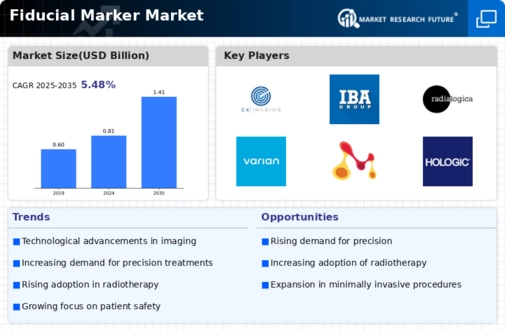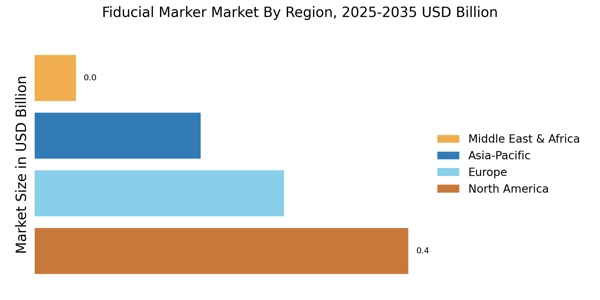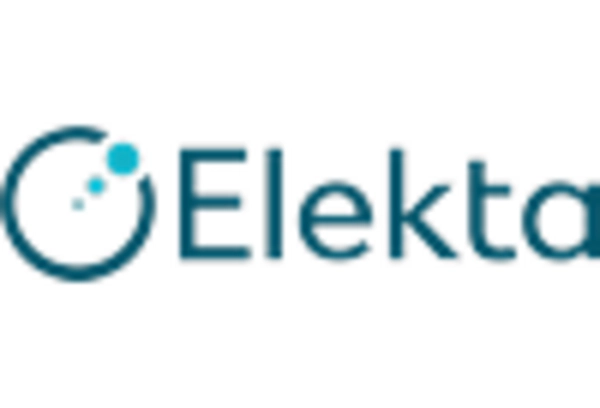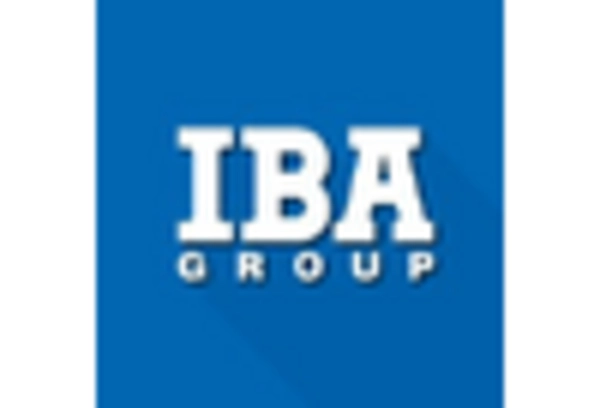Growing Prevalence of Cancer
The rising incidence of cancer worldwide is a primary driver for the Fiducial Marker Market. According to recent statistics, cancer cases are expected to rise by approximately 70% over the next two decades. This alarming trend necessitates the development of advanced treatment modalities, including the use of fiducial markers for precise tumor localization. These markers play a vital role in improving the accuracy of radiation therapy, which is essential for effective cancer management. As healthcare providers seek to enhance treatment outcomes, the demand for fiducial markers is likely to increase, thereby propelling market growth. The need for innovative solutions in oncology is becoming more pressing, further solidifying the role of fiducial markers in modern cancer treatment.
Rising Awareness of Targeted Therapies
The growing awareness of targeted therapies is influencing the Fiducial Marker Market positively. Patients and healthcare providers are increasingly recognizing the benefits of personalized medicine, which often involves the use of fiducial markers for accurate tumor localization. This awareness is driving demand for advanced treatment options that utilize these markers, as they enhance the effectiveness of targeted therapies. Furthermore, educational initiatives and patient advocacy groups are playing a crucial role in disseminating information about the advantages of fiducial markers in cancer treatment. As more patients seek targeted therapies, the market for fiducial markers is likely to expand, reflecting a shift towards more precise and individualized treatment approaches.
Technological Innovations in Radiotherapy
The Fiducial Marker Market is experiencing a surge due to advancements in radiotherapy technologies. Innovations such as real-time imaging and enhanced tracking systems are improving the precision of cancer treatments. These technologies allow for better localization of tumors, which is crucial for effective radiotherapy. The integration of fiducial markers with imaging modalities like MRI and CT scans enhances treatment accuracy, thereby increasing their adoption in clinical settings. As a result, the market for fiducial markers is projected to grow significantly, with estimates suggesting a compound annual growth rate of over 10% in the coming years. This growth is driven by the increasing number of cancer cases and the need for more effective treatment options.
Regulatory Support for Advanced Medical Devices
Regulatory bodies are increasingly supporting the development and approval of advanced medical devices, including fiducial markers, which is a key driver for the Fiducial Marker Market. Streamlined approval processes and favorable regulations are encouraging manufacturers to innovate and bring new products to market. This regulatory support is essential for ensuring that fiducial markers meet safety and efficacy standards, thereby boosting their adoption in clinical settings. As regulatory frameworks evolve to accommodate advancements in medical technology, the fiducial marker market is expected to benefit from increased product availability and enhanced market penetration. This trend indicates a promising future for the industry, as more healthcare providers adopt fiducial markers in their treatment protocols.
Increased Investment in Healthcare Infrastructure
Investment in healthcare infrastructure is a significant driver for the Fiducial Marker Market. Governments and private entities are allocating substantial resources to enhance healthcare facilities, particularly in oncology. This investment is aimed at improving patient outcomes and expanding access to advanced treatment options. As healthcare systems evolve, the integration of fiducial markers into treatment protocols is becoming more common. Enhanced infrastructure facilitates the adoption of cutting-edge technologies, including those that utilize fiducial markers for precise tumor targeting. Consequently, the market is expected to witness robust growth, as improved healthcare facilities are likely to increase the utilization of fiducial markers in clinical practice.


















Leave a Comment